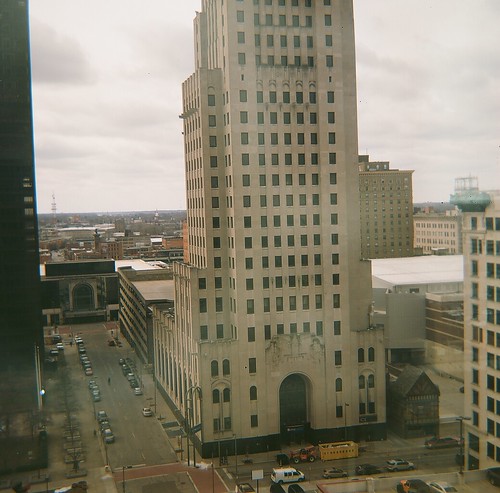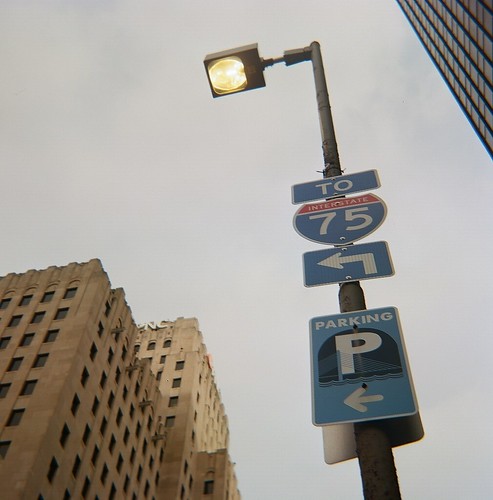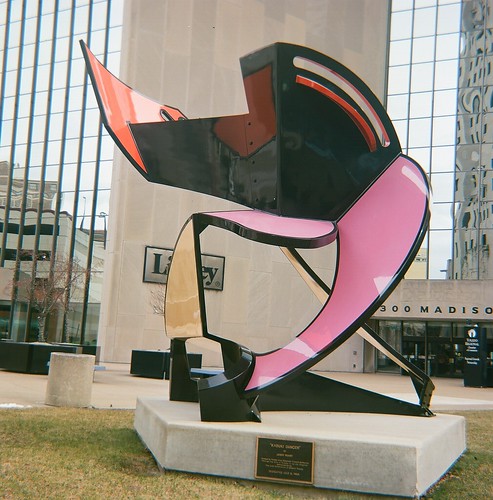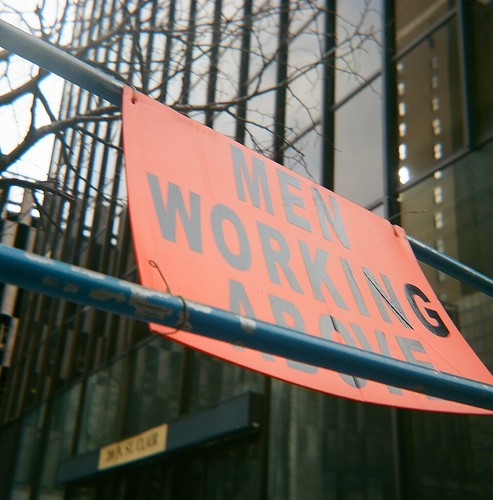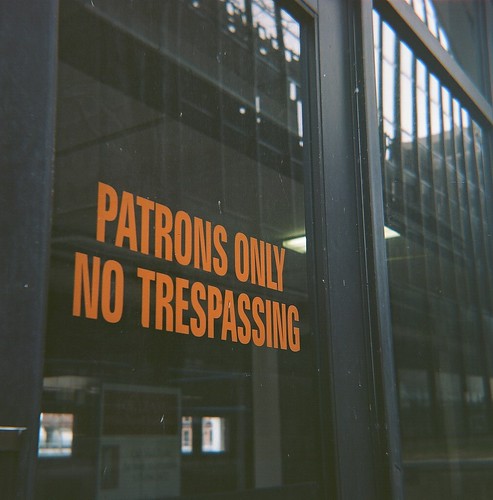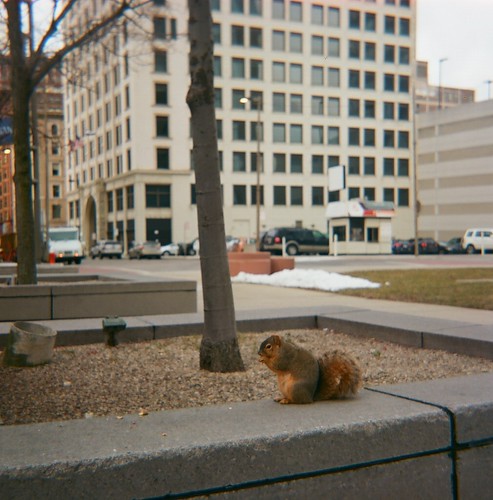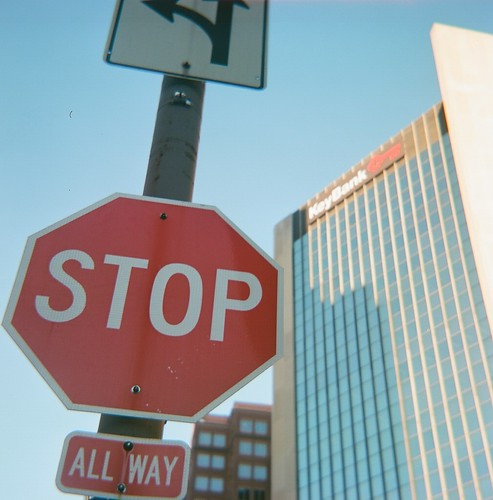 I purchased the Brownie Twin 20 at Savers (a thrift store) for $4 two years ago, and discovered an ancient roll of Ansco black-and-white still loaded with only four or five exposures used. Unsurprisingly, the found photos didn’t come out, and neither did the photos I attempted to take on the remainder of the roll.
I purchased the Brownie Twin 20 at Savers (a thrift store) for $4 two years ago, and discovered an ancient roll of Ansco black-and-white still loaded with only four or five exposures used. Unsurprisingly, the found photos didn’t come out, and neither did the photos I attempted to take on the remainder of the roll.
Finally, a year and a half later, I did a real test of the Twin 20! Back in February, I loaded it up with Ektar 100 speed, spooled onto a 620 spool.
My comments to myself at the time:
The mechanism feels a little gritty when I adjust the exposure value and the focus, but the lens looks clear.
I want this camera to turn out some nice photos, because I love being able to compose either eye-level or waist-level. It opens up so many opportunities for compositions that would otherwise be left for another day (or result in me laying on the ground to get the shot).
The auto advance came up a little short of frame 12, so I’ll be expecting the photos to be either very close or actually overlapped.
The photos actually came out just fine, and weren’t much closer together than normal on the film, so… *shrug*
The Twin 20 is zone focus, with three ranges: close-ups, groups, and scenes. Luckily, even though the weather was well below freezing and my fingers went stiff and numb with cold, I recorded the focus on each shot — up until my iPhone stopped responding and I was forced back inside to thaw my fingers.
Grouped by focus:
SCENES
GROUPS
CLOSE-UPS
As my Brownie cameras go, I really like this one. The focus is sharp, there are no obvious light leaks, any pincushion distortion seems to be pretty minimal, and the depth of field is noticeably shallower when the camera focuses closer. While I’m not totally opposed to vignetting, it’s a surprise to see that this little Brownie actually doesn’t appear to have much light falloff at the corners.
The Brownie Twin 20 is going to have to go on my list of cameras to take out for a spin again… maybe this time, in more pleasant weather.
